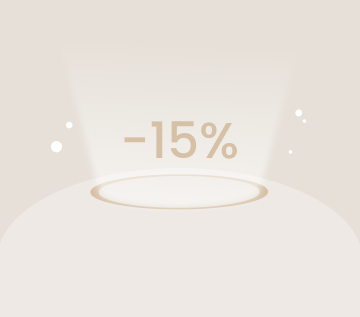Dom Pérignon
Dom Pérignon is one of the most prestigious Champagne brands that only produces vintage Champagne.
The brand is named after Dom Pérignon, a Benedictine monk who is often credited with inventing the Champagne method for making sparkling wine. This, however, is not true – the Champagne method was developed gradually almost a century after the death of Dom Pérignon. Despite that, the wine industry still owes a great deal to him and his discoveries.
Dom Pérignon lived and worked as a cellar master at the 
In addition, he developed a method that would allow white wine to be made from black grapes. Moreover, he was the first to use cork instead of tree bark plugs to seal bottles, and to store sparkling wine in thicker glass bottles to prevent them from exploding. Dom Pérignon Champagne was originally produced by Champagne Mercier who sold the brand to Moët in 1927.
The success story of Dom Pérignon begins in 1935 when 300 bottles of the 1926 vintage were sold to Simon Bros. & Co. in the United Kingdom. To commemorate their centenary, the company gave two bottles of champagne to each of their 150 best customers, and, while this was Dom Pérignon champagne, the name on the label was different. The champagne immediately gained attention – the customers wanted more of it. A year later, 100 boxes of the first 1921 vintage were shipped to New York, this time displaying the Dom Pérignon name. Of those, billionaire James Duke bought 100 bottles for himself.
Up until 1943, Dom Pérignon was produced from the regular Moët & Chandon Champagne but it was simply transferred to special 18th century-style bottles. As of 1947, Dom Pérignon has been produced completely separately.
Only the best grapes are used for vintage champagne production. Therefore, champagne is only produced in years with good yields of grapes or when the cellar master believes that he can do something exceptional with the difficult harvest. The manufacturer has not released how many bottles of champagne they produce in each vintage, but it is estimated to be at least 5 million.
Vincent Chaperon, the current cellar master, only makes champagne from wines that have aged for more than 20 years. The cellar master and Dom Pérignon oenologists taste the wines regularly to monitor their development and pinpoint the best time for clarification. As a general rule, they produce a maximum of six vintages per decade. Dom Pérignon is always based on Chardonnay and Pinot Noir grapes, the proportions of which are tweaked to perfection, thus the taste may vary between vintages. Each bottle of Dom Pérignon is aged in the cellar for at least nine years, as a result of which the wine achieves a perfect balance and harmony.
WHY DOM PERIGNON?
Royal Champagne
In 1981, Dom Pérignon was chosen as the official champagne for the wedding of Lady Diana Spencer and Prince Charles. The 1961 vintage was served in honour of the bride’s birth year and the bottles carried a special insignia created just for the occasion. They ordered 99 bottles for the wedding.
Up to 25 years
Dom Pérignon usually releases each of its vintages three times. The first release is typically aged around 8 years, the second around 18, and the third around 25. The majority of Dom Pérignon bottles are first-release bottles, if the bottle has a ‘P2’ or ‘P3’ marking, then it is a later release.
Only the best
Since quality is of utmost importance to Dom Pérignon, they carefully consider which vintage they will market. With some vintages, more patience is required – for instance, the 2009 Dom Pérignon was released before the 2008 vintage.






